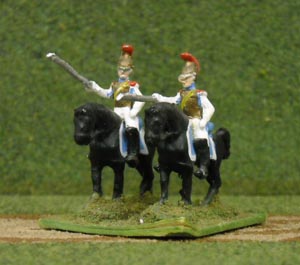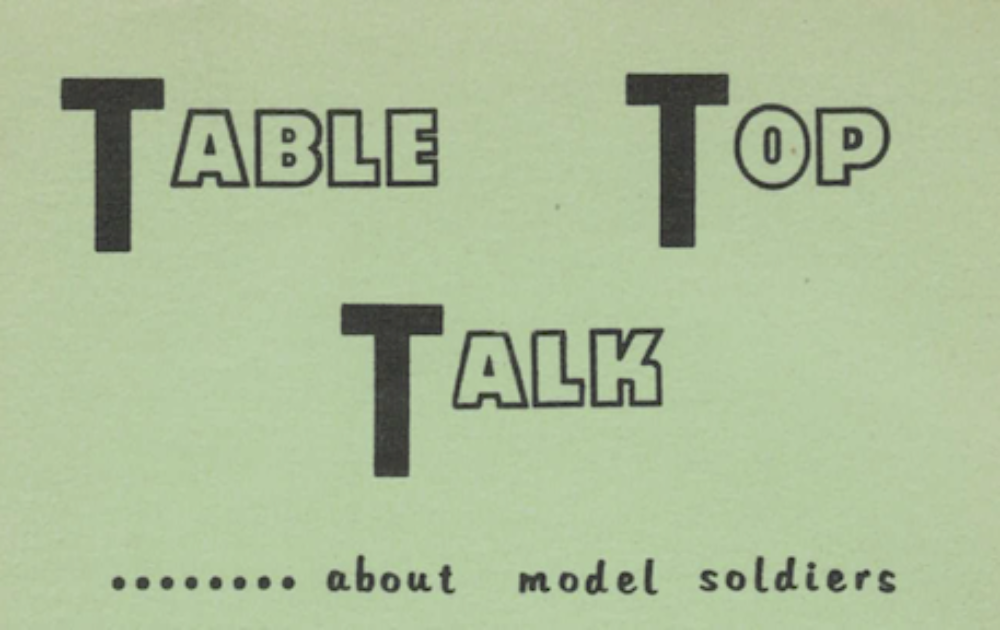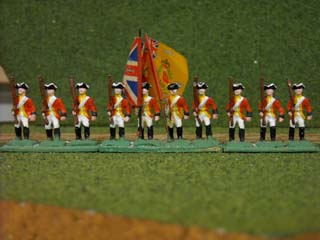Recent correspondence has me thinking that there has been a rediscovery of the classic 20mm figures! I sure hope this is the case as this is one of my favorite figure (choose one: Scales – Sizes). To be honest I don’t remember if 20mm or N-Gauge were my first metal figures, to be sure they were Scruby figures. For sure my first war game figures were 20mm (OK, Airfix – call ’em whatever you like size or scale-wise). Sadly I drifted away from the scale. I’m sure that was due more to market trends than personal preference. I’ve re-visited the scale (OK, I’ll commit to the word scale for the remainder of this posting – I’ll discuss scale vs. size as well define what I mean by scale in just a bit) on and off over the years, but never really got back to 20mm as my primary figure scale. However, given some of my recent war game projects this may change, at least in part.
Before we begin, I should explain what 20mm means for me. Your thinking may differ from mine, but at least you will have a better understanding of where I’m coming from…
As we all know there is a wide variety of figure sizes each having its own advantages, appeal and disadvantages. I work with the assumption that a human figure will need to represent a man or woman of approximately 6 feet in height. I realize that not all humans are the same height; as such there will need to be some variations among figures. That said dimensions of weapons and equipment should remain consistent with the scale in question (be it 20mm, 1 inch, 30mm or the new hotness which is 19.675mm).
What Size/Scale is 20mm? From my perspective 20mm is 3.5mm to the foot or 1:86 to 1:90 scale (this will match what can be found in a number of books covering the subject of collecting Toy Soldiers – so, no, I didn’t just make it up). There you have it, plain and simple (or not as many people refer to 25mm (4mm to the foot) or 1:76 to 1:72 as 20mm).
This takes us back to the sticky subject of Size vs. Scale. I’ve heard and read this point argued too many times to count and I don’t plan on arguing it here. Instead I will tell you my thinking on the subject…
When talking about Scale; typically we make our miniatures smaller than life-size. We typically scale down by a constant proportion. Here is where we get the 3.5mm to the foot or 1:86 scale – a Scale model, something made using the same basic proportions as the item being recreated.
When we talk about Size; we are really talking about the physical size of the thing (6 feet tall, 50 meters long). This is where we get the figures sizes like 20mm, 30mm and 40mm – a figure that is 25mm tall is not necessarily made to the same proportions as the real life item being modeled.
Right or wrong, for many years the words Scale and Size have been used interchangeably when referring to miniature figures. I’ve read these mixed references dating back to the 1930’s possibly earlier, so mixing and matching is nothing new.
I look at it this way: Figures are made to some given Size which approximates some Scale (see my definition of 20mm above). Notice the keyword (approximates) in the preceding statement. For the most part I tend to drop the words Scale and Size when talking about figures – a 20mm miniature is a 20mm miniature – it is roughly 20mm tall its scale is approximately 1:86. Not exactly clean, but this is how I look at figure Scales and Sizes. So, from this point forward I’ll refer to 20mm miniatures as just that 20mm miniatures.
Now that Scale vs. Size has been dealt with lets dive into our topic…
My introduction to 20mm [metal] miniatures was in the 1970’s with figures produced by Jack Scruby. Some of these figures were of his own design, others were designed by John Greenwood (Greenwood and Ball) and Holger Eriksson among others. I recall that my first 20mm miniatures were designed for the American Civil War, however, I was converting them for use in the Franco Prussian War. The figures I used were a mix of Scruby, Greenwood and Thomas. The Scruby and Greenwood figures were the easiest to convert. I still have a few of these figures, but not many.
Here I digress for just a minute. Both Scruby and Greenwood referred to 20mm figures as 3/4″ – the figures were approximately 3/4″ tall – the remaining gravity molds for pattern (or dolly, as they are commonly referred to today) figures are all marked as 3/4″ scale.
After my Franco-Prussian War project I switched back to Napoleonic and began to build my Napoleonic armies. The Greenwood and Scruby figures replaced my original (unpainted) Airfix figures. Some of these figures remain in my collection today. Other eras of interest where I used 20mm minatures for my war game armies include: Ancients, The Crusades, The SYW & AWI, WWI and WWII. Each of these will be featured in future posts concerning Classic 20mm miniatures.
That should about wrap up the written portion today’s post – I still have plenty of notes for future posts, so please come back to see what other interesting tidbits I have to share.
To close out today’s posting I’ll share a few photos of 20mm Napoleonic figures from my collection. Some of these figures are a little worse for wear. Some casting date back to the early 1960’s and some are current production. All are in the process of being re-based for use with Scruby’s Fire & Charge rules.

First up, some current production 20mm British Napoleonic

Front and Back views

Vintage 20mm French Artillery – wheels are plastic

Vintage 20mm Russian Napoleonic

Vintage 20mm Austrian Napoleonic

Vintage 20mm Austrian Napoleonic Cavalry

We will close with some Vintage 20mm British Napoleonic
I’ve posted the unedited photos from this session as an album on Picassa Web Albums.
Click here to view the Classic 20mm Photo Album
Coming up next time Classic 20mm Part II – A look at SYW and AWI models in 20mm as well as some bits of trivia and such.



















